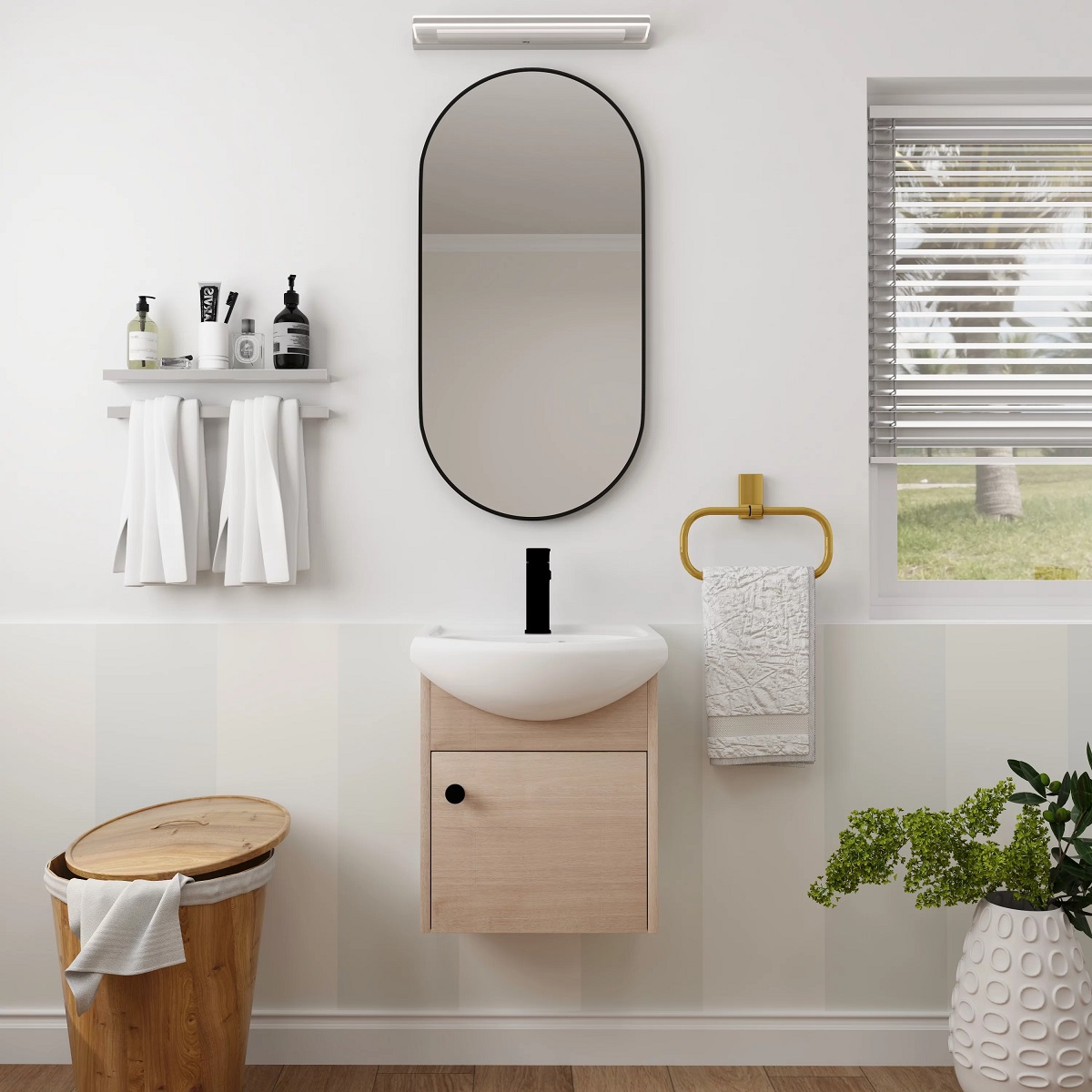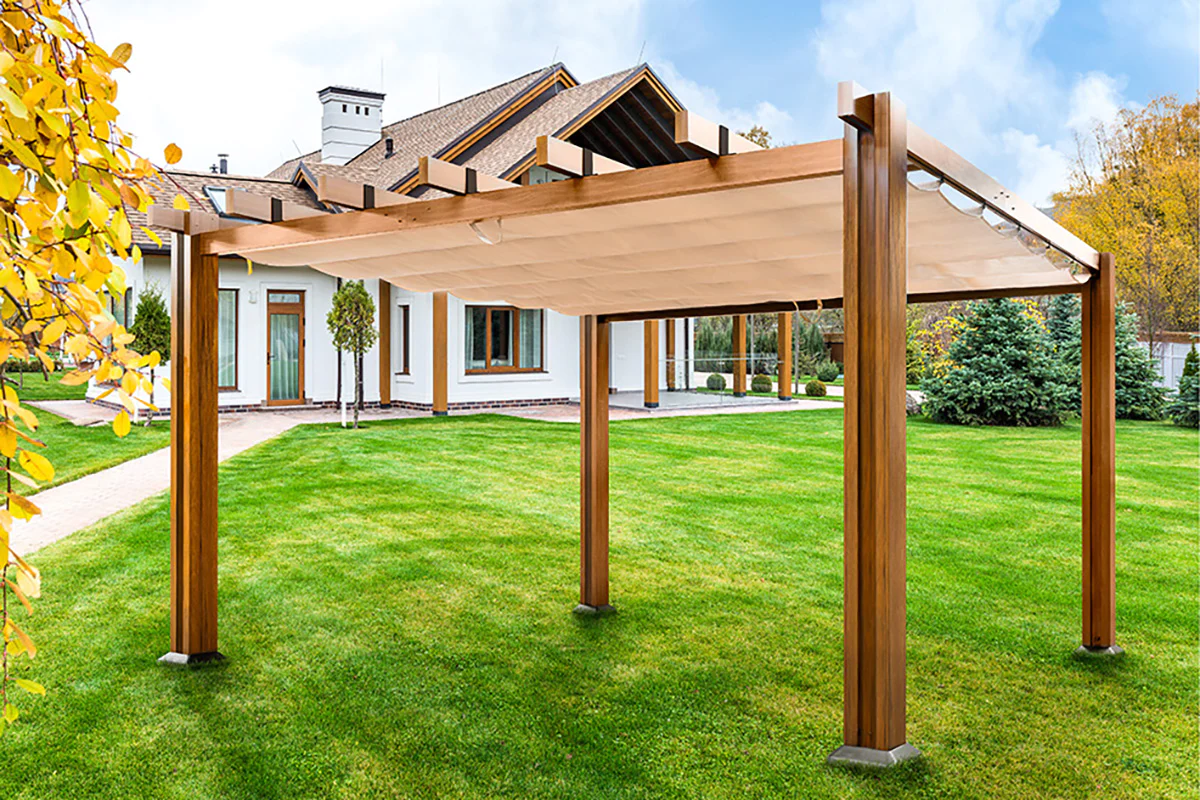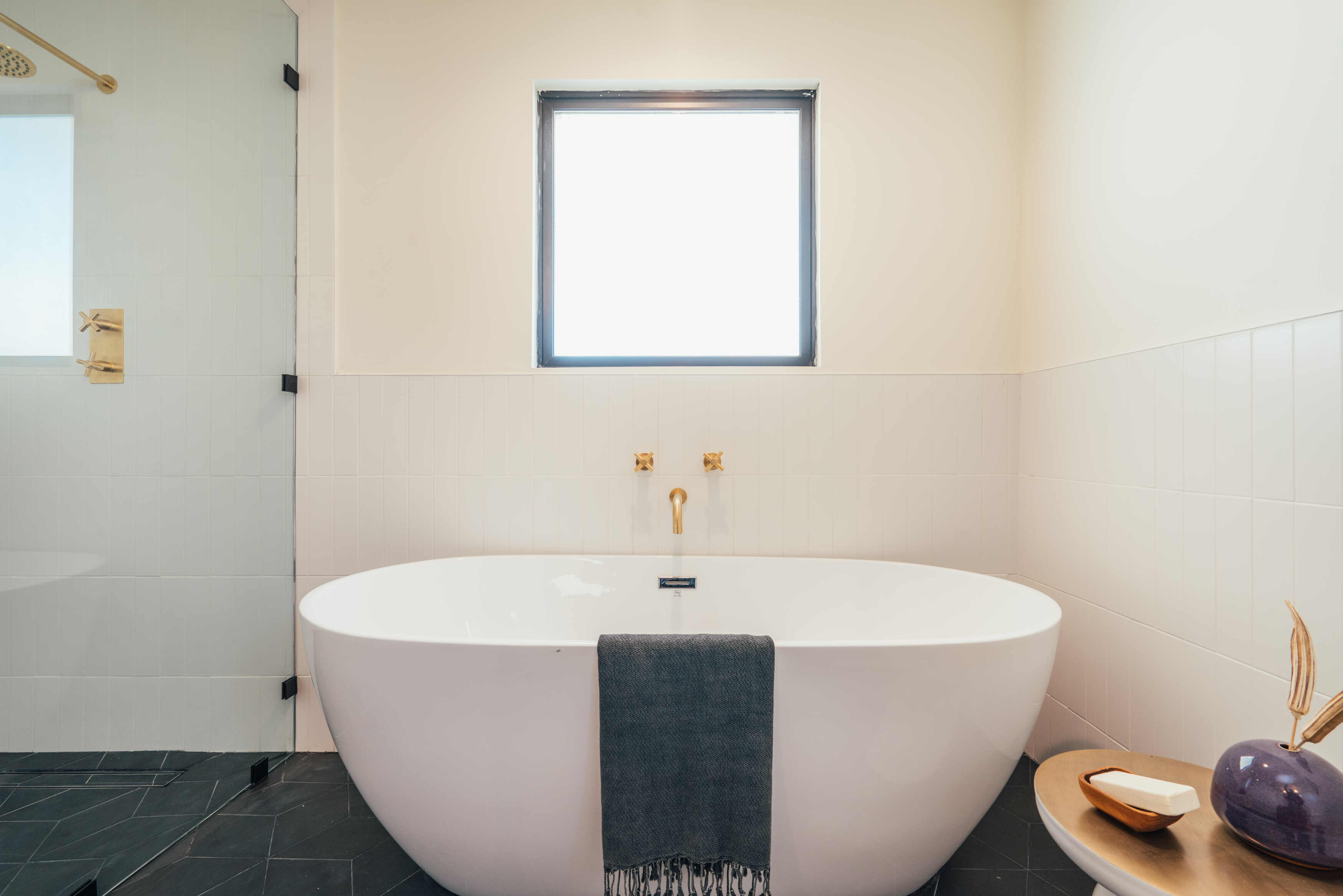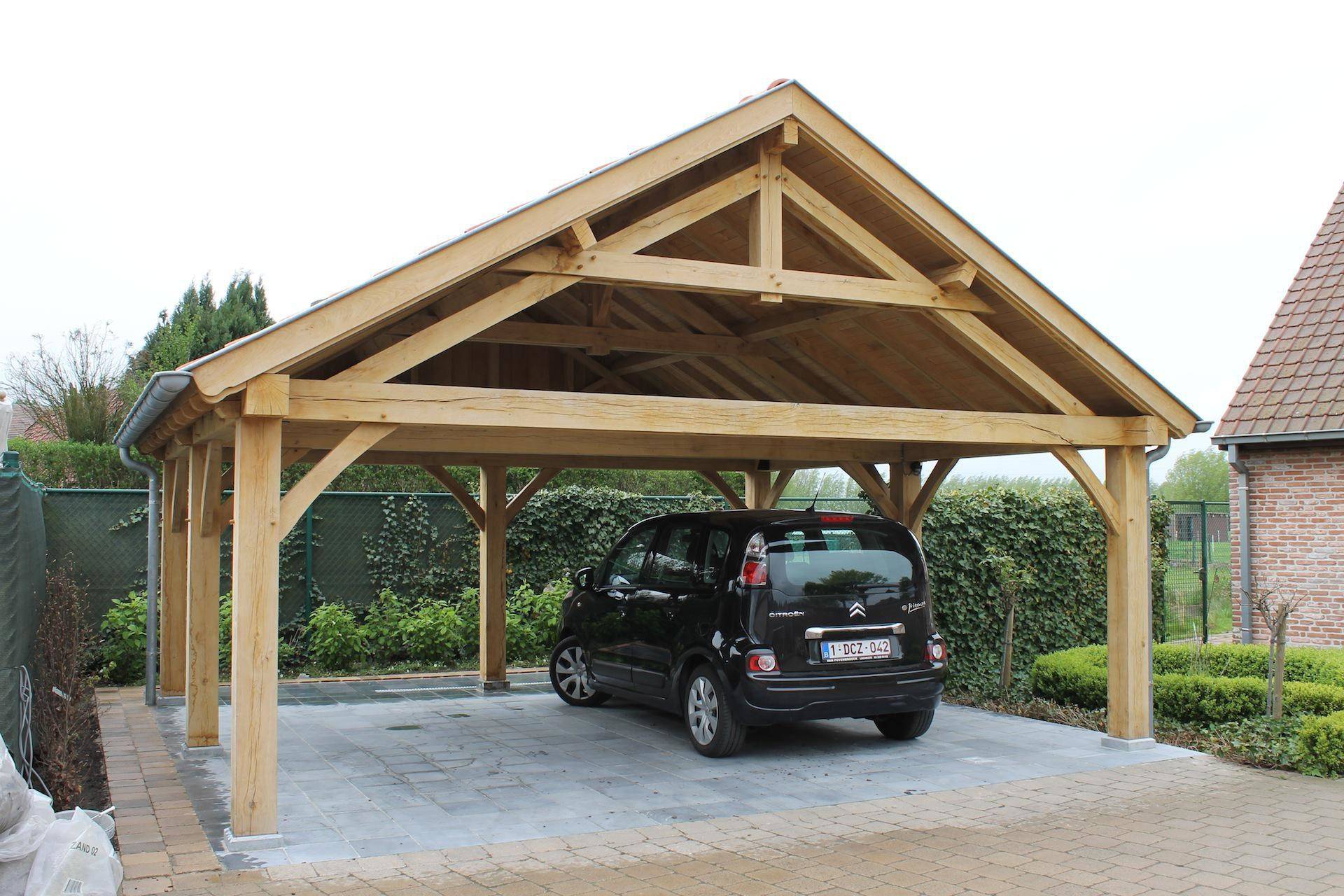

Articles
What Is A Freestanding Vanity
Modified: August 26, 2024
Discover the benefits and features of free standing vanities in our informative articles. Upgrade your bathroom with stylish and functional designs.
(Many of the links in this article redirect to a specific reviewed product. Your purchase of these products through affiliate links helps to generate commission for Storables.com, at no extra cost. Learn more)
Introduction
A free-standing vanity is a versatile and stylish addition to any bathroom. Offering both functionality and aesthetic appeal, it serves as a centerpiece that enhances the overall design of the space. Whether you are remodeling your bathroom or building a new home, a free-standing vanity can be a fantastic investment that adds value and charm to your property.
Unlike a built-in vanity that is attached to the wall, a free-standing vanity is independent and not fixed to any surface. This means that it can be easily moved or repositioned without the need for extensive renovation work. It offers flexibility in terms of design, allowing you to create a personalized and unique look for your bathroom.
In this article, we will explore the various aspects of free-standing vanities, including their definition, types, materials, styles, installation process, maintenance tips, and factors to consider before purchasing one. By the end of this article, you will have a comprehensive understanding of the concept and be well-equipped to make an informed decision when choosing a free-standing vanity for your bathroom.
So let’s dive in and discover the world of free-standing vanities!
Key Takeaways:
- Free-standing vanities offer flexibility, style, and functionality, allowing you to personalize your bathroom space with various types, materials, and designs to suit your needs and preferences.
- Before purchasing a free-standing vanity, consider factors such as size, storage requirements, material, style, and budget to make an informed decision that enhances both the functionality and aesthetics of your bathroom.
Read more: What Is A Vanity?
Definition of a Free Standing Vanity
A free-standing vanity, also known as a stand-alone vanity or a freestanding bathroom cabinet, is a self-contained unit that is not attached to the wall or any other surface. It typically consists of a countertop, sink, and storage space for toiletries and other bathroom essentials. A free-standing vanity is designed to be a standalone piece of furniture that adds functionality and style to any bathroom.
Unlike traditional vanities that are permanently fixed to the wall, a free-standing vanity offers flexibility in terms of placement. This means that you can position it wherever it suits your bathroom layout, whether against a wall, in a corner, or even in the center of the room.
Free-standing vanities are available in a variety of sizes, styles, and materials, allowing you to choose one that complements your bathroom design and meets your storage needs. From sleek and modern designs to rustic and traditional ones, there is a free-standing vanity to suit every taste and preference.
These vanities can be made from various materials, such as wood, MDF (medium-density fiberboard), metal, or even glass. Each material offers its own unique look and durability, giving you the freedom to select one that aligns with your desired aesthetic and budget.
Furthermore, free-standing vanities often come with additional features and options, such as drawers, shelves, or open storage compartments. This allows you to organize your bathroom essentials efficiently and keep the space clutter-free.
Overall, a free-standing vanity provides a practical and stylish solution for your bathroom. It not only serves as a functional space for grooming and storing items but also adds a touch of personality and elegance to the room. Whether you prefer a minimalist design or a more ornate look, a free-standing vanity can be customized to reflect your individual style and enhance the overall ambiance of your bathroom.
Types of Free Standing Vanities
When it comes to free-standing vanities, there are several types to consider. Each type offers its own unique features and benefits, allowing you to choose the one that best suits your needs and preferences. Let’s explore some of the popular types of free-standing vanities:
-
Single Sink Vanity:
This type of free-standing vanity features a single sink and is ideal for smaller bathrooms or powder rooms. It provides a compact and efficient solution for personal grooming without taking up too much space.
-
Double Sink Vanity:
Perfect for larger bathrooms or shared spaces, a double sink vanity offers two sinks and provides ample counter space for multiple users. It allows for simultaneous use, making it convenient for couples or families.
-
Read more: What Is A Vanity Mirror
Vanity with Drawers:
A vanity with drawers offers enhanced storage capabilities, allowing you to store toiletries, beauty products, and other bathroom essentials. The drawers provide organization and easy access to items, making your daily routine more efficient.
-
Vanity with Open Shelves:
For a more open and modern look, consider a vanity with open shelves. This type of vanity provides convenient storage while also displaying decorative items such as towels, plants, or baskets. It adds a touch of style and visual interest to your bathroom.
-
Vanity with Cabinets:
If you prefer a more traditional and classic look, a vanity with cabinets is a great option. The cabinets offer concealed storage, keeping your bathroom organized and clutter-free. They are perfect for stowing away cleaning supplies and extra toiletries.
These are just a few examples of the types of free-standing vanities available on the market. Depending on your specific needs and preferences, you can choose a vanity that offers the right combination of features, storage options, and style. Whether you have a small bathroom or a spacious one, there is a type of free-standing vanity that will suit your space and enhance the overall aesthetics of your bathroom.
Pros and Cons of Free Standing Vanities
As with any piece of furniture, there are both advantages and disadvantages to consider when it comes to free-standing vanities. Understanding these pros and cons can help you make an informed decision and determine if a free-standing vanity is the right choice for your bathroom. Let’s take a look at some of the benefits and drawbacks:
Read more: What Is Vanity Furniture
Pros
- Flexibility: One of the major advantages of a free-standing vanity is its flexibility. Since it is not attached to the wall, it can be easily moved or repositioned according to your preferences or future bathroom layout changes.
- Design Options: Free-standing vanities come in a wide range of styles, sizes, and materials, allowing you to choose one that matches your bathroom decor and personal taste. Whether you prefer a modern, sleek design or a rustic, traditional look, there is a free-standing vanity to suit your style.
- Easy Installation: Installing a free-standing vanity is generally easier and less time-consuming compared to built-in vanities. It typically requires basic plumbing and leveling adjustments, making it a great DIY project for homeowners.
- Storage Space: Free-standing vanities often offer ample storage space, with options such as drawers, shelves, or cabinets. This allows you to keep your bathroom essentials organized and easily accessible, reducing clutter and maintaining a clean and tidy space.
- Enhanced Style: A free-standing vanity can serve as a focal point in your bathroom and elevate its overall aesthetics. It adds a touch of elegance and sophistication, making your bathroom feel more luxurious and inviting.
Cons
- Less Counter Space: One drawback of free-standing vanities is that they often have less counter space compared to built-in vanities. This can be a consideration if you require a larger area for your personal grooming routine or if you have multiple users in the same bathroom.
- Potential Stability Issues: Since free-standing vanities are not attached to the wall, there is a slight possibility of stability issues, especially if they are not properly installed or if they are subject to excessive weight or movement. However, this can be mitigated by following proper installation guidelines and ensuring the vanity is on a level surface.
- Higher Cost: In some cases, free-standing vanities may be more expensive compared to built-in vanities due to their standalone design and added customization options. However, the cost can vary depending on the material, size, and brand of the vanity.
Considering these pros and cons will help you determine if a free-standing vanity aligns with your needs and preferences. It is essential to weigh the advantages against the disadvantages to make an informed decision and select the right vanity for your bathroom.
Materials Used in Free Standing Vanities
Free-standing vanities are available in a variety of materials, each offering its own unique look, durability, and maintenance requirements. The choice of material can significantly impact the overall style and performance of the vanity. Let’s explore some of the common materials used in free-standing vanities:
Wood:
Wood is a popular material for free-standing vanities due to its natural beauty and timeless appeal. Hardwoods like oak, maple, and mahogany are commonly used for their durability and resistance to moisture. Wood vanities can be stained or painted to match any bathroom style, and they provide a warm, organic feel to the space.
Read more: What Is A Vanity Table
MDF (Medium-Density Fiberboard):
MDF is an engineered wood product made by compressing wood fibers with resin. It is a cost-effective alternative to solid wood and is commonly used in the construction of free-standing vanities. MDF offers a smooth and consistent surface, allowing for easy customization with paint or veneer finishes. However, it is important to note that MDF is more susceptible to damage from moisture compared to solid wood.
Metal:
Metal free-standing vanities, such as those made of stainless steel or brass, can add a sleek and modern touch to your bathroom. Metal vanities are durable, resistant to moisture, and easy to clean. They are particularly popular in contemporary and industrial-style bathrooms.
Glass:
Glass vanities bring a touch of elegance and sophistication to any bathroom. They can be made of tempered glass, which is sturdy and resistant to breakage. Glass vanities are visually appealing, help create a sense of openness, and are easy to clean. However, they may require more upkeep to prevent water spots or smudges.
Other Materials:
In addition to the above-mentioned materials, free-standing vanities can also be made from materials such as bamboo, concrete, or even natural stone like marble or granite. These materials offer unique and high-end options, providing a luxurious and distinctive look to your bathroom.
When choosing the material for your free-standing vanity, consider factors such as durability, maintenance requirements, and overall aesthetic appeal. Assess your personal style and the specific needs of your bathroom to find the perfect material that combines functionality and design.
Read more: What Is A Bedroom Vanity
Styles and Designs of Free Standing Vanities
Free-standing vanities come in a wide range of styles and designs, allowing you to find the perfect match for your bathroom decor and personal taste. Whether you prefer a contemporary, traditional, or transitional look, there is a style of free-standing vanity to suit your preferences. Let’s explore some of the popular styles and designs:
Modern/Contemporary:
Modern or contemporary free-standing vanities feature clean lines, sleek finishes, and minimalist designs. They often incorporate materials like glass, metal, or high-gloss laminates for a stylish and streamlined look. This style is perfect for those who appreciate a sleek and uncluttered aesthetic.
Traditional:
Traditional free-standing vanities are characterized by ornate details, decorative moldings, and rich finishes like dark woods or antique-inspired finishes. These vanities often feature raised panel doors, intricate carvings, and intricate hardware for a classic and timeless look. Traditional vanities are ideal for those who prefer a more elegant and sophisticated bathroom style.
Transitional:
Transitional free-standing vanities combine elements of both modern and traditional designs. They offer a balance between contemporary and ornate features, resulting in a versatile and timeless look. Transitional vanities can incorporate a mix of materials, such as wood and glass, and often feature clean lines with subtle decorative accents.
Read more: What Is A Floating Vanity
Rustic/Farmhouse:
Rustic or farmhouse-style free-standing vanities evoke a cozy and charming ambiance. They feature natural materials like reclaimed wood or distressed finishes to create a warm and inviting atmosphere. Rustic vanities often have a distressed or weathered look, with details like barn-style doors or vintage-inspired hardware.
Open Shelf:
Open shelf vanities are a popular choice for those who appreciate a more open and contemporary feel. These vanities feature shelves instead of closed cabinets, allowing for easy access to towels, baskets, or decorative items. Open shelf vanities are perfect for displaying stylish toiletries or adding pops of color to your bathroom.
When selecting the style and design of your free-standing vanity, consider the existing decor of your bathroom and your personal preferences. Whether you prefer a sleek and modern look or a more traditional and ornate design, there is a free-standing vanity style to suit every taste and complement your overall bathroom aesthetic.
Installation Process of Free Standing Vanities
The installation of a free-standing vanity requires careful planning and attention to detail to ensure a secure and functional addition to your bathroom. While the process may vary depending on the specific vanity and your bathroom’s configuration, here is a general overview of the installation process:
1. Prepare the Space:
Start by removing any existing fixtures or cabinets in the area where you plan to install the free-standing vanity. Ensure that the wall and floor are clean and free from any debris or protrusions that may affect the vanity’s stability.
Read more: What Is A Vanity Light
2. Measure and Mark:
Measure the dimensions of the vanity and mark the desired placement on the floor using a pencil or masking tape. Ensure that the marked area allows for enough space to comfortably access the vanity and other bathroom fixtures.
3. Plumbing Preparation:
If the vanity includes a sink, connect the necessary plumbing lines, such as the water supply and drain pipes, according to the manufacturer’s instructions. Make sure to turn off the water supply before making any connections, and use proper sealants or plumber’s tape to prevent leaks.
4. Position and Level:
Carefully position the free-standing vanity on the marked area and use a level and shims to ensure that it is perfectly level and stable. Adjust the vanity as needed to achieve a balanced and even placement.
5. Secure the Vanity:
Depending on the specific vanity model, secure the vanity to the floor using screws or brackets provided by the manufacturer. This will help prevent any movement or wobbling. Ensure that the vanity is securely fastened without over-tightening the screws, as this can damage the vanity or the floor.
6. Connect Plumbing:
Once the vanity is securely installed, connect the plumbing lines to the sink and faucet. Double-check all connections to ensure that they are tight and leak-free. Turn on the water supply and test for any potential leaks or issues.
7. Finishing Touches:
Complete the installation by applying an appropriate sealant or caulk around the edges of the vanity to create a watertight seal. This will help prevent any moisture from seeping into the surrounding areas. Additionally, install any hardware, such as knobs or handles, to complete the vanity’s look.
It is important to note that the above steps provide a general guideline for installing a free-standing vanity. The specific instructions may vary depending on the manufacturer and model. It is always recommended to carefully read and follow the manufacturer’s installation instructions provided with the vanity.
Maintenance Tips for Free Standing Vanities
Proper maintenance is essential to keep your free-standing vanity in excellent condition and extend its lifespan. By following these maintenance tips, you can ensure that your vanity remains functional, clean, and visually appealing:
1. Regular Cleaning:
Clean your free-standing vanity on a regular basis to remove dirt, dust, and stains. Use a mild, non-abrasive cleaner suitable for the specific material of your vanity. Avoid harsh chemicals or abrasive scrubbers that may damage the finish or surface of the vanity. Wipe down the countertop, sink, and any other surfaces with a soft cloth or sponge.
Read more: How To Build A Freestanding Patio Cover
2. Prevent Water Damage:
Prevent water damage by wiping up any spills or standing water immediately. Moisture can cause warping, discoloration, or deterioration of the vanity materials, especially if they are made of wood or MDF. Use coasters or trays under toiletries and avoid leaving wet items on the vanity surface.
3. Avoid Harsh Chemicals:
Avoid using harsh chemicals, such as bleach or ammonia, on your free-standing vanity. These chemicals can damage the finish or cause discoloration. Instead, opt for mild, non-abrasive cleaning solutions specifically designed for the material of your vanity.
4. Protect the Surface:
Use protective mats or trays under items such as hot tools, curling irons, or hair dryers to prevent heat damage to the vanity’s surface. Consider using felt pads or coasters under toiletries, bottles, or cosmetic products to prevent scratches or marks on the countertop or shelves.
5. Check and Tighten Hardware:
Regularly check and tighten any hardware, such as knobs, handles, or hinges, to ensure they are secure. Loose hardware can affect the functionality and appearance of your vanity. Tighten any screws or bolts as necessary using appropriate tools.
Read more: What Size Vanity Light For A 30-Inch Vanity
6. Avoid Excessive Weight:
Avoid placing excessive weight on the free-standing vanity, especially on open shelves or drawers. Overloading the vanity can lead to sagging, warping, or even structural damage. Distribute weight evenly and store heavier items in lower cabinets or drawers.
7. Protect Against Moisture:
In bathrooms with high humidity levels, it is important to promote proper ventilation and minimize moisture buildup. Use exhaust fans or open windows during and after showers to reduce the risk of water damage or mold growth. Consider using a dehumidifier if necessary.
By following these maintenance tips, you can preserve the beauty and functionality of your free-standing vanity for years to come. Regular cleaning, preventive measures, and attention to detail will help keep your vanity in pristine condition and ensure it remains a standout feature in your bathroom.
Factors to Consider Before Purchasing a Free Standing Vanity
Choosing the right free-standing vanity for your bathroom involves more than just finding one that looks good. It’s important to consider several factors to ensure that the vanity meets your needs and complements your bathroom design. Here are some key factors to consider before making a purchase:
1. Size and Placement:
Measure the available space in your bathroom to determine the appropriate size of the free-standing vanity. Consider the layout, door swing, and proximity to other fixtures to ensure proper placement. You want to ensure that the vanity fits comfortably without obstructing movement or causing an imbalance in the room’s design.
Read more: How To Build A Freestanding Divider Wall
2. Storage Requirements:
Assess your storage needs and consider the amount of storage space offered by the free-standing vanity. Determine whether you require drawers, shelves, or cabinets for storing toiletries, towels, and other bathroom essentials. Think about your organizational preferences and determine if open shelves or closed cabinets are more suitable for your needs.
3. Material and Durability:
Consider the materials used in the construction of the free-standing vanity. Opt for materials that are durable and resistant to moisture and humidity, especially if you have a bathroom with high humidity levels. Common materials include wood, MDF, metal, and glass, each offering its own unique look and level of durability.
4. Style and Design:
Choose a free-standing vanity that complements the overall style and aesthetic of your bathroom. Consider the existing decor, color scheme, and overall ambiance of the space. Whether you prefer a modern, traditional, or transitional style, select a vanity that creates a harmonious and cohesive look in your bathroom.
5. Sink Type:
Determine the type of sink you prefer for your free-standing vanity. Options include integrated sinks, undermount sinks, vessel sinks, or pedestal sinks. Consider both aesthetics and functionality when selecting the sink type that best suits your needs and complements the overall design of the vanity.
Read more: What Is A Vanity Case Used For
6. Budget:
Establish a budget for your free-standing vanity and consider the cost of the vanity itself as well as any additional expenses such as installation or plumbing adjustments. Keep in mind that the price can vary depending on the material, size, brand, and additional features of the vanity. Set a realistic budget and explore options within that range.
7. Quality and Brand Reputation:
Research the quality and brand reputation of the free-standing vanity you are considering. Look for reputable manufacturers or brands that offer warranties and have positive customer reviews. Investing in a high-quality vanity ensures its longevity and durability over time.
By considering these factors before purchasing a free-standing vanity, you can make an informed decision and select a vanity that not only meets your functional needs but also enhances the overall design and aesthetic of your bathroom. Take your time, research different options, and choose a vanity that you’ll enjoy for years to come.
Conclusion
Free-standing vanities offer a versatile and stylish solution for enhancing the functionality and visual appeal of your bathroom. From their flexibility in placement to the wide range of styles and designs available, free-standing vanities can be customized to suit any bathroom decor and personal taste.
Throughout this article, we have explored the definition of free-standing vanities, the different types available, the pros and cons, as well as the materials, styles, installation process, maintenance tips, and factors to consider before making a purchase.
When choosing a free-standing vanity, it is important to consider factors such as size, storage requirements, material, style, and budget. By carefully assessing your needs and preferences, you can select a vanity that not only provides functional storage space but also enhances the overall aesthetics and ambiance of your bathroom.
Remember to maintain your free-standing vanity through regular cleaning, preventing water damage, and checking and tightening hardware. These maintenance practices will help preserve the beauty and functionality of your vanity for the long term.
In conclusion, a well-chosen free-standing vanity can transform your bathroom into a stylish and functional space. Whether you prefer a modern, traditional, or transitional design, there is a free-standing vanity available to suit your needs and preferences.
So, take your time, explore different options, and consider the unique characteristics of your bathroom. With the right free-standing vanity, you can create a beautiful and personalized bathroom that you will enjoy for years to come.
Frequently Asked Questions about What Is A Freestanding Vanity
Was this page helpful?
At Storables.com, we guarantee accurate and reliable information. Our content, validated by Expert Board Contributors, is crafted following stringent Editorial Policies. We're committed to providing you with well-researched, expert-backed insights for all your informational needs.





0 thoughts on “What Is A Freestanding Vanity”